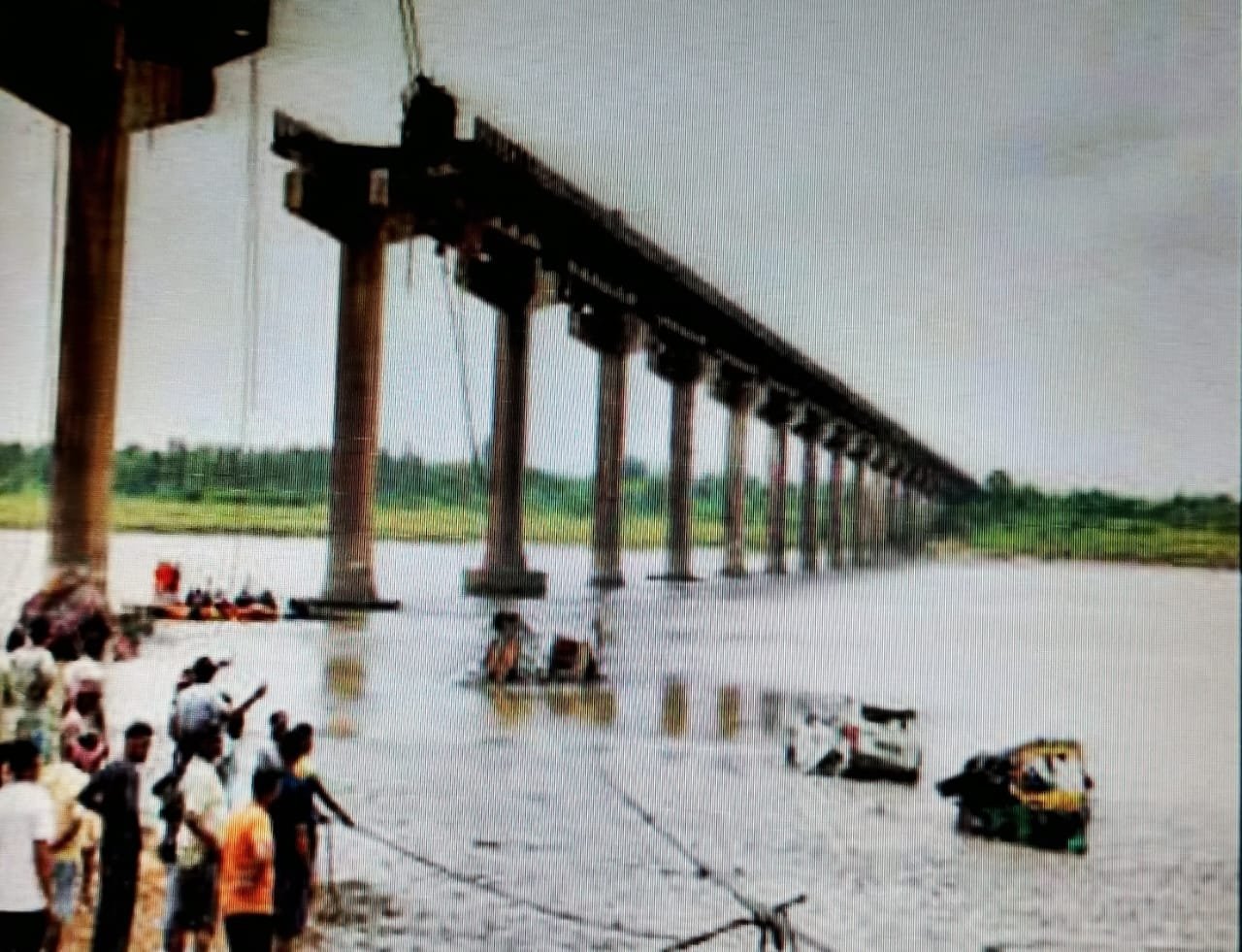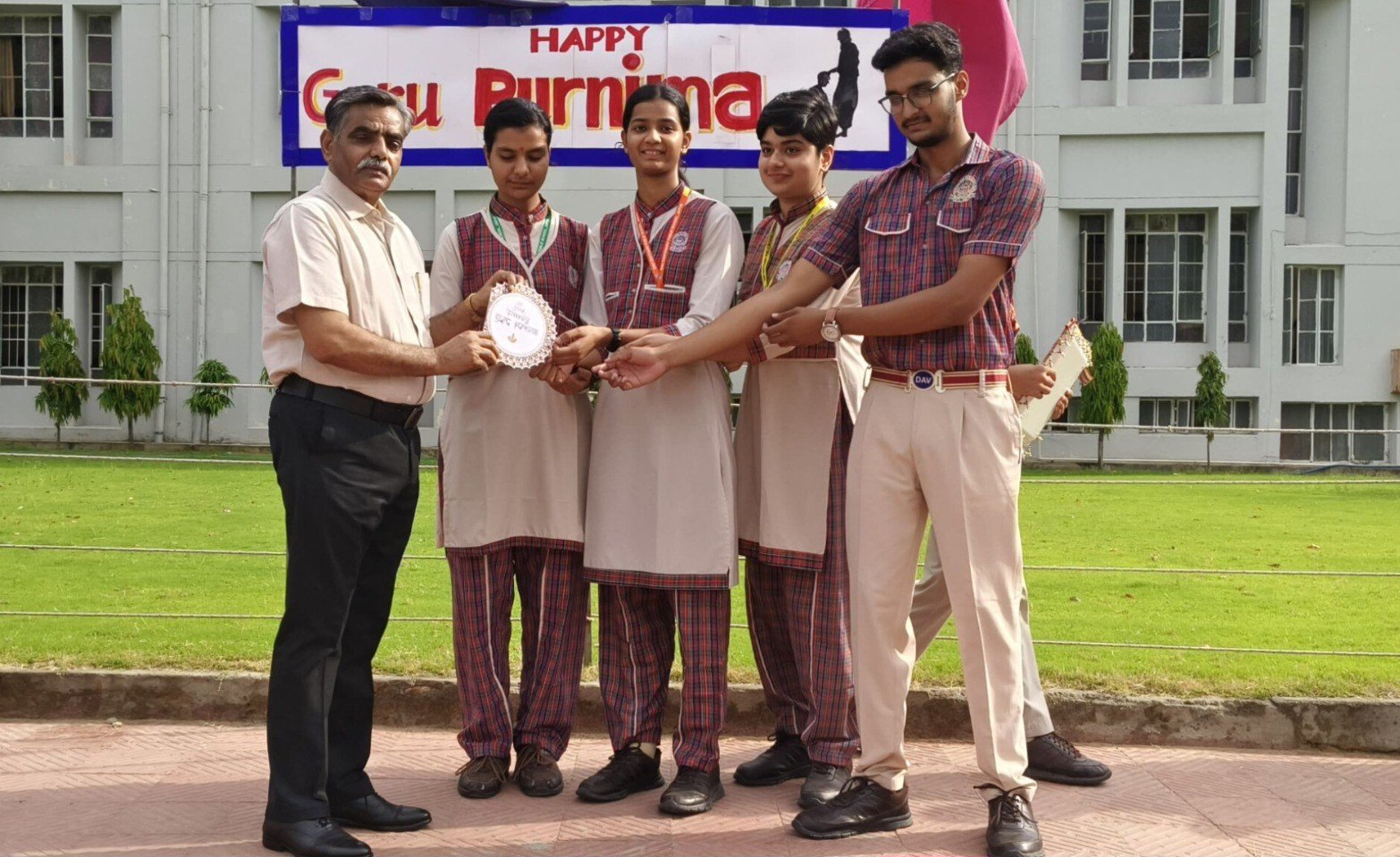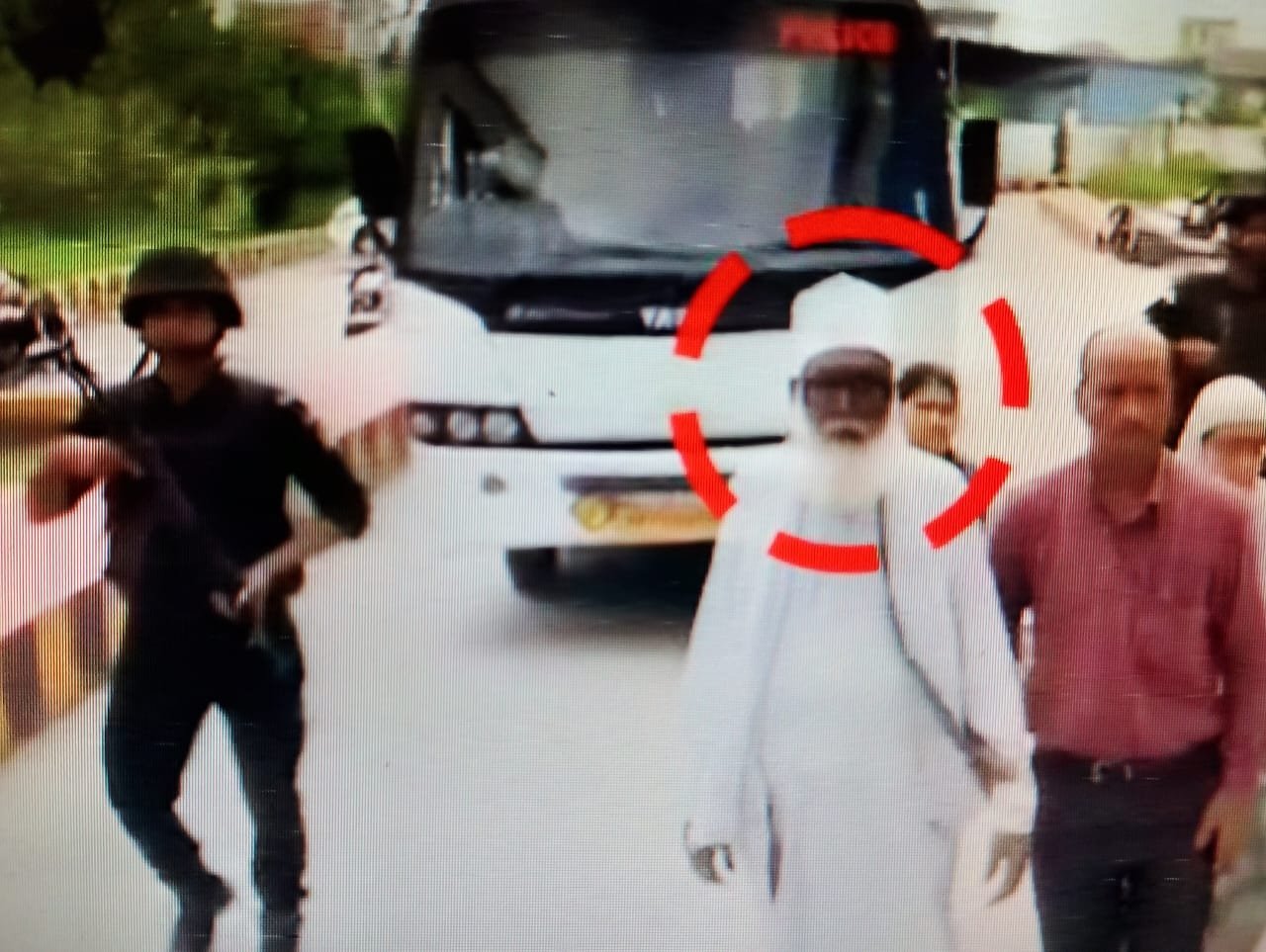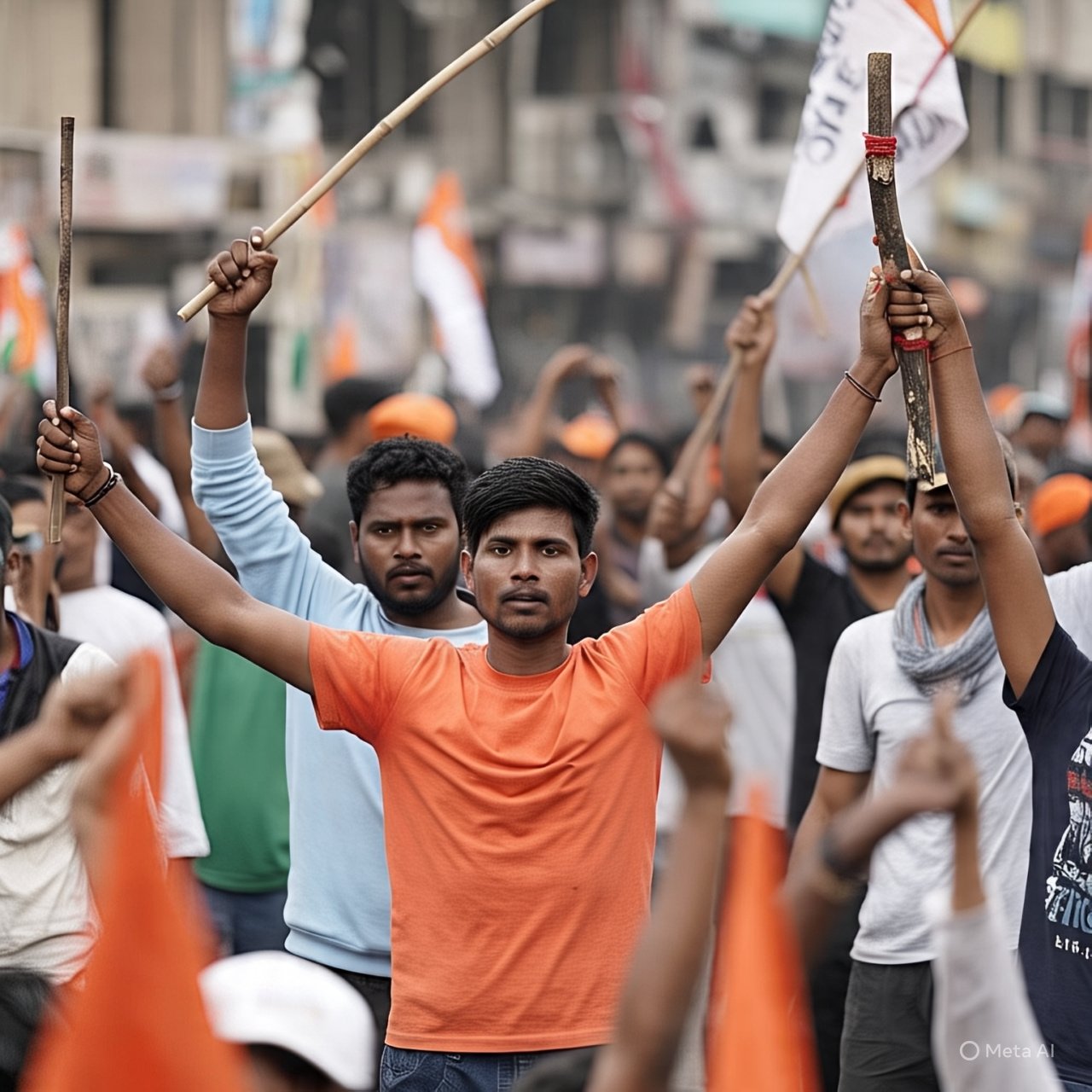India
Kumbh Mela 2025: How Maha Kumbh Promotes Unity and National Integration

Contents
Introduction to Kumbh Mela
Kumbh Mela is one of the largest religious gatherings in the world, drawing millions of devotees, pilgrims, and tourists to its sacred banks. The festival celebrates the ancient Hindu tradition of ritual bathing in sacred rivers, which is believed to cleanse sins and grant liberation. Its historical origins can be traced back to the mythological tale of the churning of the ocean, where the nectar of immortality, or ‘amrit,’ was secured by the deity and the demons. This celestial event is said to have resulted in the creation of four pilgrimage sites, where Kumbh Mela is held every twelve years in a rotating cycle across these locations: Haridwar, Allahabad (Prayagraj), Nashik, and Ujjain.
The most significant of these gatherings is the Maha Kumbh Mela, occurring every twelve years at Prayagraj, where it is attended by an even larger congregation due to the exceptional spiritual energy associated with this event. The Maha Kumbh Mela is marked by the auspicious alignment of celestial bodies, making it a particularly revered occasion for Hindu devotees. During this time, various religious activities take place, including prayer meets, discussions led by spiritual leaders, and numerous rituals for both individual and collective spiritual growth.
Kumbh Mela has evolved into more than just a religious observance; it also serves as a platform for promoting values of unity and national integration among diverse communities. Individuals from different backgrounds, regions, and walks of life gather, share their experiences, and engage in communal activities, thereby fostering a sense of belonging and harmony in an increasingly fractured world. This celebration not only amplifies the spiritual essence of Hinduism but also acts as a testament to India’s rich cultural heritage and social fabric.
Maha Kumbh: A Symbol of Spiritual Unity
The Maha Kumbh Mela stands as one of the largest congregations of humanity, drawing millions of devotees and spiritual seekers from diverse backgrounds, religions, and cultures. This festival, deeply rooted in Hindu tradition, transcends geographical boundaries, inviting participation from people irrespective of caste or creed. It is more than just a religious event; it embodies a profound message of spiritual unity, emphasizing that the essence of spirituality is universally shared.
At the heart of the Maha Kumbh Mela is the belief that the waters of the sacred rivers—Ganga, Yamuna, and Saraswati—offer purification and salvation. This notion resonates with countless individuals, prompting them to embark on journeys that culminate at the confluence of these waters. During the Kumbh, the grand gathering serves as a remarkable platform for interfaith dialogue and religious tolerance, encouraging attendees to engage in conversations that nurture respect and understanding among various belief systems. Here, the sacredness of diversity is celebrated, fostering an inclusive atmosphere.
In addition to spiritual rejuvenation, the Maha Kumbh also provides a unique opportunity for individuals to connect with one another, promoting solidarity among the masses. Activities such as yoga sessions, meditation workshops, and cultural performances create an environment conducive to shared learning and exchange of ideas. Pilgrims have the chance to witness and partake in rituals from different religions, elevating the spirit of camaraderie and cooperation. The festival’s overarching theme underscores the commonality of human experience, which encourages attendees to rise above their differences in pursuit of shared spiritual goals.
Thus, the Maha Kumbh serves as a potent reminder of the importance of unity in diversity, reinforcing the belief that spirituality, in its numerous forms, unites people in profound and meaningful ways.
Cultural Melting Pot: Diversity at Kumbh Mela
The Kumbh Mela is a remarkable gathering that epitomizes the cultural diversity of India, drawing millions of pilgrims from various backgrounds. At this grand event, one can witness a symphony of traditions, rituals, and practices that reflect the country’s pluralistic society. Each region, community, and even individual often brings their unique customs, contributing to a rich tapestry that enhances the overall experience of the Mela.
Rituals at Kumbh Mela vary significantly, with participants engaging in age-old practices that have been passed down through generations. For instance, devotees from different Hindu sects perform their distinct rites, such as the purification through holy baths at designated ghats, chanting of mantras, and offering of prayers. These rituals serve not only as a personal spiritual journey but also as a medium for fostering interfaith dialogue and understanding.
The attire donned by attendees further exemplifies this cultural melting pot. Traditional clothing, often vibrant and varied, reflects regional influences, ranging from the simple dhoti-kurta of Uttar Pradesh to the elaborate sarees of South Indian women. Such diversity in attire highlights not only the beauty of Indian culture but also the unity among various communities, accentuating a shared identity while celebrating individual differences.
Moreover, food stalls selling regional delicacies from all corners of the country exemplify the culinary diversity present at Kumbh Mela. From the spicy street food of Delhi to the sweets of Bengal, these gastronomic offerings create an atmosphere of communal sharing and fellowship. By coming together to enjoy a meal, attendees are reminded of their shared humanity and the rich heritage that binds them.
In essence, the Kumbh Mela acts as a powerful catalyst for unity and integration, showcasing India’s cultural diversity while promoting a sense of brotherhood. This celebration of differences not only reinforces collective identity but also ensures that the spirit of inclusivity prevails amidst the grandeur of the event.
Economic Impact and National Integration
The Kumbh Mela, a significant pilgrimage observed in India, is not only a spiritual gathering but also a formidable catalyst for economic growth and national integration. Each occurrence of this event attracts millions of devotees from across the country, transforming the host city into a hub of commercial activities. Local markets thrive, and small businesses flourish, as pilgrims seek accommodations, food, and various services during the festivity. This surge in economic activity contributes significantly to the local economy, generating employment opportunities for residents and stimulating growth in multiple sectors.
Moreover, the presence of a diverse crowd fosters a unique environment where individuals from various cultural and social backgrounds come together. This convergence from different corners of India promotes a sense of unity among the participants, thereby enhancing national integration. As pilgrims interact, share experiences, and engage in communal activities, they develop a greater understanding of disparate cultures and traditions that exist within the country. This shared experience not only enriches individual perspectives but also bridges the regional divides inherent in India’s multicultural society.
Also read : Unlock Your Destiny: November 18, 2024 Horoscope Predictions
The preparations for the Kumbh Mela entail substantial investment from both the government and private sector, aimed at infrastructure development, public safety, and transportation facilities. This investment facilitates interstate cooperation, as various state governments collaborate in organizing and providing resources for the event. Such partnerships serve as a powerful example of collective effort towards a common goal, highlighting the interdependence between different states of India. In this regard, Kumbh Mela acts as a platform that not only elevates local economies but also reinforces the thread of unity binding the nation’s diverse population.
Influence of Kumbh Mela on Social Cohesion
The Kumbh Mela, regarded as one of the world’s largest religious gatherings, serves as a powerful catalyst for social cohesion among its participants. Each occasion attracts millions of devotees from diverse backgrounds, transcending barriers of caste, creed, and social status. This confluence of individuals creates a unique atmosphere fostering emotional bonds and shared experiences that underpin a collective identity and promote national unity.

Attendees often share personal narratives that reflect the profound impact of the Kumbh Mela on their lives. They recount stories of long-lost acquaintances rediscovering friendships, families coming together in devotion, and strangers offering warmth and hospitality. Through these shared experiences, participants develop a deeper understanding of one another’s cultures and traditions, reinforcing a sense of belonging that extends beyond the festival’s duration.
The atmosphere at Kumbh Mela is imbued with communal spirit, as visitors engage in various activities such as rituals, prayers, and collective celebrations. The act of bathing in the sacred waters is often accompanied by collective chants and spiritual discourses, enhancing the sense of unity among attendees. These moments of shared spirituality contribute to the emotional fabric that binds individuals together, highlighting the significance of collective experiences in promoting social harmony.
Moreover, the Kumbh Mela exemplifies inclusivity, as it welcomes individuals from different regions and socioeconomic backgrounds. This inclusiveness creates a rich tapestry of cultural exchanges, where participants learn from one another and celebrate their diversity. As a result, Kumbh Mela not only enriches personal lives but also strengthens the overall social framework, reinforcing the values of unity and integration on a national level.
Environmental Awareness Initiatives during Kumbh Mela
The Kumbh Mela, one of the largest religious gatherings in the world, has increasingly incorporated environmental awareness initiatives to promote sustainability and public responsibility. Recognizing the significant impact such a vast congregation can have on the environment, various stakeholders, including governmental bodies, NGOs, and local communities, have come together to implement a range of initiatives aimed at minimizing ecological footprints. These initiatives reflect India’s commitment to environmental preservation and reinforce the sense of national identity among participants.
One of the key activities during the Kumbh Mela is the extensive cleanliness drives, which are designed to address waste management and littering issues prevalent during the event. Organized by local authorities in collaboration with volunteers, these drives involve the collection and segregation of waste, encouraging pilgrims to dispose of their waste responsibly. By promoting cleanliness, the Kumbh Mela not only ensures a pleasant experience for the participants but also underscores the importance of maintaining a clean environment, which is crucial for public health and aesthetic value.
Furthermore, sustainable practices have gained traction during the Kumbh Mela, such as the use of eco-friendly materials and products. Initiatives promoting the use of biodegradable items and local handicrafts not only mitigate waste but also support local artisans, thereby fostering economic sustainability. The message of conservation is reinforced through workshops and campaigns that educate attendees about the significance of water preservation and biodiversity protection, which are integral to India’s environmental ethos.
Through these collective efforts, the Kumbh Mela serves as a platform for fostering environmental consciousness among millions of participants. As such, these environmental initiatives not only enhance the religious and cultural significance of the event but also evolve into a powerful statement of unity and collective responsibility toward safeguarding India’s natural resources.
Kumbh Mela in the Digital Age
The Kumbh Mela, an ancient spiritual gathering, is increasingly embracing modern technology to enhance its organization and outreach. The integration of digital tools has transformed the way this colossal event is planned, executed, and communicated to millions of devotees and participants. With a focus on unity and national integration, the digital age has made it possible for diverse groups to engage in meaningful discourse and share experiences through various online platforms.
Social media has emerged as a pivotal force in promoting the Kumbh Mela’s core message. Platforms such as Facebook, Twitter, and Instagram facilitate real-time communication, allowing individuals from different regions and backgrounds to connect. Hashtags like #KumbhMela2025 have gained traction, offering a space for users to post their thoughts, images, and stories, showcasing the spirit of unity that defines this event. Furthermore, through live streaming, people who cannot physically attend the gathering can engage virtually, broadening the reach of the Mela and making it a truly inclusive experience.
In addition to social media, apps designed specifically for Kumbh Mela serve multiple purposes such as providing information on logistics, safety protocols, and accommodation options. These applications help manage the massive influx of devotees, ensuring that crucial information is readily available, thus enhancing the overall experience. The digitization of services not only streamlines operations but also emphasizes a shared sense of responsibility among participants to maintain decorum and respect within the gathering.
As Kumbh Mela progresses into the digital age, the blending of tradition with technology signals a progressive approach to cultural events. This integration of modern communication tools and age-old spiritual practices reinforces the essence of community, fostering a deep-seated connection among millions, sharpening the focus on unity and national integration that the Kumbh Mela exemplifies. The future of this massive congregation looks to be an amalgamation of tradition and innovation, reflecting contemporary societal values in a historical framework.
Global Perspective: Kumbh Mela Beyond Borders
The Kumbh Mela, traditionally recognized as one of the largest religious gatherings in the world, has increasingly garnered attention from international audiences. With its rich cultural heritage and profound spiritual significance, the festival attracts thousands of foreign visitors who seek a unique experience of India’s spiritual landscape. The influx of international attendees underscores the global appeal of the Kumbh Mela, highlighting its role as a bridge between diverse cultures and traditions.
As a prominent event that emphasizes unity and inclusivity, the Kumbh Mela resonates with the values of social harmony and mutual respect. This festival showcases India’s commitment to maintaining cultural diversity while promoting national integration. Participants from various backgrounds, religions, and nationalities come together, embodying the essence of unity that the Kumbh Mela seeks to propagate. The festival’s inclusive nature serves as a platform for fostering dialogues among different communities, thereby reinforcing a message of coexistence and cooperation on a global scale.
The growing interest in the Kumbh Mela illustrates its potential to enhance India’s soft power. By showcasing the festival to a global audience, India plays a pivotal role in promoting its cultural richness and spiritual wisdom. This, in turn, contributes to the strengthening of international ties and mutual understanding. The Kumbh Mela is not just a religious event; it embodies a shared human experience of seeking peace, spirituality, and connection—elements that transcend geographic boundaries. As more international visitors participate in this grand celebration, the Kumbh Mela continues to serve as a powerful symbol of global unity, demonstrating the universality of spiritual pursuits and cultural curiosity.
Conclusion
The Kumbh Mela, with its rich history and cultural significance, stands as a monumental testament to the potential for unity and national integration. Throughout the years, this grand festival has attracted millions from diverse backgrounds, emphasizing the values of togetherness and spiritual harmony. Participants, regardless of their socio-economic status, religion, or ethnicity, come together in a shared experience that transcends individual differences, fostering a sense of community and belonging that is critical in today’s fragmented society.
The very essence of the Kumbh Mela lies in its ability to bridge divides. As pilgrims gather at the sacred confluence of rivers, they not only participate in religious rituals but also engage in the collective celebration of humanity. The diversity of attendees, ranging from local villagers to international visitors, enriches this experience, creating an environment where dialogues can flourish and mutual understanding can thrive. The festival acts as a catalyst for cultural exchange, allowing for the dissemination of ideas and fostering respect among varied traditions.
Looking ahead, the significance of the Kumbh Mela will continue to evolve. In an ever-changing world marked by increasing polarization, the festival’s role in promoting unity and integration remains paramount. The future Kumbh Melas hold the promise of reinforcing these values, making them relevant to contemporary societal issues. As communities come together to celebrate, they reinforce a collective identity rooted in shared beliefs and respect for diversity. This powerful gathering has the potential to shape narratives that advocate for peace, tolerance, and understanding beyond religious affiliations.
In conclusion, the Kumbh Mela is more than just a religious event; it is a celebration of human spirit that unites people across various divides. By promoting unity and fostering national integration, the festival embodies the hope for a more harmonious future, encouraging individuals and communities to come together in their shared humanity.
Accident
Vadodara Bridge Tragedy: Death Toll Rises to 19, Two Still Missing – Rescue Operations Continue in Mahisagar River

Contents
Vadodara (Gujarat), July 11, 2025
A heart-wrenching incident has shaken Gujarat as the Gambhira–Mujpur bridge over the Mahisagar River in Vadodara district collapsed unexpectedly. So far, 19 people have lost their lives, while 2 individuals remain missing. Rescue teams have been relentlessly working for the third consecutive day in the hope of saving lives and retrieving the missing.
How Did the Tragedy Happen?
The incident occurred on the morning of July 9, when several vehicles were crossing the bridge. Suddenly, a major section of the bridge collapsed into the river, dragging with it two trucks, an SUV, a pickup van, an auto-rickshaw, and two motorcycles. The bridge was nearly 40 years old, and multiple complaints had been made about its deteriorating condition.
Victims Identified, Families Devastated
So far, 18 bodies have been recovered from the debris, while one critically injured person succumbed to injuries at the hospital, taking the total death toll to 19. Among the victims were women, children, and entire families who were out on a pilgrimage for Guru Purnima.
Search Operations Still Underway
Rescue efforts by NDRF, SDRF, and fire brigade teams are still ongoing. The operation is facing major challenges due to the river’s depth, strong current, and over 10 feet of thick mud, making it difficult to access submerged vehicles. Cranes, boats, and divers are being deployed to find the two missing persons.
Government Response and Action
In the wake of the incident, the state government swiftly suspended four engineers and has ordered a detailed investigation into the bridge collapse. The government has also announced financial compensation of ₹2 lakh to the families of the deceased and ₹50,000 for the injured.
Public Outrage and Unanswered Questions
Local residents claim the bridge was already in a dangerous condition, but authorities failed to take timely action. Media reports reveal that just days before the tragedy, a journalist had posted a video highlighting the poor state of the bridge, which went ignored.
This incident has once again exposed the negligence and oversight in maintaining public infrastructure. Behind every number is a grieving family – a shattered home, a mother who lost her child, a father never to return. The need of the hour is strict accountability, immediate structural audits, and long-term corrective measures — so that such a tragedy never repeats itself.
Education
Guru Purnima Celebration at DAV CPS, Jaipur – A Heartfelt Tribute to Guiding Lights

Jaipur | July 10, 2025
In an atmosphere filled with devotion, gratitude, and inspiration, DAV Centenary Public School, Vaishali Nagar, Jaipur celebrated Guru Purnima with heartfelt enthusiasm on Thursday, July 10. The event turned out to be more than just a celebration—it was a beautiful expression of love and respect for the teachers who illuminate the path of learning for their students.
The morning assembly set the tone for the day with the soothing sounds of shlokas dedicated to gurus, creating a spiritually charged environment across the campus. The essence of the celebration was beautifully captured in a speech that explained the cultural and historical roots of Guru Purnima, reminding everyone of the powerful legacy of the guru-shishya tradition.
Students poured their hearts out through soulful poems, melodious songs, and inspiring speeches, each echoing a shared sentiment—deep respect for their mentors. A mesmerizing classical dance performance, portraying devotion and reverence towards gurus, stole the spotlight and left the audience spellbound.
One of the most touching moments of the day was when the students presented a handmade gratitude card to Principal Mr. A.K. Sharma, who has been a constant source of wisdom and encouragement. In his address, Mr. Sharma reflected on the irreplaceable role of teachers in shaping young minds and urged students to stay rooted in values, discipline, and lifelong learning.
“The presence of a guru in one’s life is a blessing,” he said. “True success comes not just from knowledge, but from the humility to keep learning.”
The event concluded on a thoughtful note, leaving everyone—teachers, students, and staff—feeling more connected, more thankful, and more inspired. Guru Purnima at DAV CPS was not just an event, but an experience that reminded all of the timeless role of a teacher—not just in the classroom, but in life.
Crime
Indian Nurse to Be Hanged in 6 Days in Yemen — The Heartbreaking Story of Nimisha Priya, Who Gave Her Partner a Sedative That Turned Deadly

Contents
Thiruvananthapuram / Yemen | July11, 2025
Once a hopeful young nurse from Kerala, Nimisha Priya is now counting her final days in a Yemeni prison. Her crime — administering a sedative that led to the death of her Yemeni business partner, Alkhader Al-Omari. Her punishment — execution by hanging on July 13, 2025.
But behind this grim sentence lies a story much more complicated — one filled with ambition, control, fear, and a moment that changed everything.
A Nurse with Dreams, and a New Life Abroad
Nimisha Priya wasn’t a criminal when she left India. She was a caregiver — a skilled nurse with dreams of building a better life. In Yemen, she found work, opened a clinic, and partnered with Alkhader Al-Omari, a local man who helped her navigate the foreign land.
But what started as a partnership slowly turned into a prison.
Trapped in a Toxic Relationship
Reports from the time suggest that Al-Omari soon took control of more than just the clinic. He allegedly confiscated Nimisha’s passport, isolated her, and began mentally and physically abusing her. He took over her earnings and threatened her when she talked about returning home to India.
Far from family, friends, or legal protection, Nimisha felt completely trapped — her life and freedom in the hands of a man who, she believed, would never let her go.
The Night It All Changed
Then came that fateful night in 2017.
According to court documents, Nimisha gave Al-Omari a high dose of a sedative. Her stated intention was not to kill him, but to make him unconscious, retrieve her passport, and escape. But the sedative proved too strong — Al-Omari died.
Panic set in. Nimisha reportedly dismembered his body and tried to hide the evidence in a water tank. A gruesome and desperate act that, once discovered, left her no room to explain.
A Death Sentence, and a Race Against Time
The Yemeni court ruled the act pre-meditated murder and sentenced Nimisha to death by hanging.
For years, legal teams in India and Yemen pleaded for clemency. Activists pointed to the abuse she suffered, to the desperation of a woman with no escape, and to her otherwise clean record. Her mother, in tears, begged the Yemeni family for forgiveness, hoping for a “Diya” — blood money — a custom in Yemen that allows the victim’s family to pardon the accused.
But that pardon never came.
Only Six Days Left…
Today, Nimisha Priya is a prisoner not just behind bars, but in time. With just six days left, she awaits her execution. Her mother is still trying — hoping against hope — for one final miracle.
Meanwhile, millions in India are asking:
Was she a murderer? Or a victim of circumstance, trying to survive in a world where no one came to help?
Beyond the Verdict
This is not just Nimisha’s story. It’s the story of thousands of Indian women who work abroad, often with little protection. It’s the story of how desperation can drive someone to the edge, and how the law — especially in foreign lands — rarely leaves room for the grey in between.
Crime
India’s Biggest Scam You Never Heard Enough About — ₹49,000 Crore Vanished, 5 Crore Lives Shattered, And Now… One Big Arrest

Contents
Lucknow | July 11, 2025
In what could be one of the biggest financial frauds in India’s history, the curtain has finally started to lift. The Uttar Pradesh Economic Offences Wing (EOW) has arrested Gurnam Singh (69) — the key director behind Pearls Agrotech Corporation Ltd (PACL) — from Punjab’s Ropar district.
His crime? Allegedly orchestrating a ₹49,000 crore Ponzi scheme that duped nearly 5 crore investors across India.
This wasn’t just about money. It was about dreams sold and lives broken — mostly belonging to farmers, small shopkeepers, daily wage workers, and middle-class families who trusted PACL with their hard-earned savings.
The Dream That Turned Into a Trap
PACL promised affordable land investments. The plan sounded simple — invest now, and in a few years, you’d either get a valuable land parcel or high returns.
But behind the glittering promises lay a hollow scam.
No land. No returns. Just a web of false paperwork and delayed answers — until one day, even those stopped.
EOW’s New Face — Tough, Accountable, and On a Mission
What’s changed now? The UP EOW has introduced a “Reward and Punish” system to fast-track major financial crime probes like this:
- Monthly performance tracking of officers
- Fast-track teams deployed in every district
- Seizure of properties under Section 111 of the new BNS law
- Helplines, awareness drives, and social media alerts for public support
This new system has already led to 14 arrests, including key names linked to the ₹250 crore V-Care scam and this massive PACL fraud.
This Isn’t Just About Money — It’s About Betrayal
One woman investor said it best:
“We saved for our children’s education, for their future. Now we run around courts and collector offices, with nothing to show for it.”
Behind every number in this scam — there’s a family. A broken promise. A shattered future.
The Bigger Picture
This arrest proves one thing: Justice may be slow, but it’s not blind. ₹49,000 crore didn’t just disappear — it was siphoned off through trust and illusion. The real question now is:
Will India’s legal system bring back justice and money for 5 crore defrauded citizens? Or will this case too fade into the dust of files and forgotten hearings?
India
India Crosses 1.46 Billion — But Why Are People Having Fewer Children? UN Report Reveals the Changing Math of Population

Contents
New Delhi | July11, 2025
There was a time when India’s growing population was considered the country’s biggest problem. Slogans like “Hum Do, Hamare Do” (We Two, Our Two) echoed across walls and radio channels. But times have changed — and so has the narrative.
According to the latest report by the United Nations, India’s population has officially crossed 1.46 billion, making it the most populous nation on the planet. But what’s surprising is this: India’s fertility rate — the number of children a woman has — is steadily declining.
Today, the average Indian woman is giving birth to just two children, which is right around the replacement level needed to maintain a stable population.
So, if fewer children are being born, why is the population still rising? What’s really happening behind these numbers?
This Isn’t Just About Statistics — It’s a Social Shift
There was a time when India was labelled a “population bomb.” Now, several Indian states — including Kerala, Delhi, Tamil Nadu, Karnataka, and Punjab — have fertility rates below replacement level.
This isn’t happening due to force or law — but through education, awareness, and personal choice. It’s a quiet revolution led by society itself.
India is now slowly moving towards population stability, something once thought to be decades away.
Women Are Leading This Change
Behind these shifting numbers is a bigger story — the story of India’s changing women:
- They’re more educated
- They’re joining the workforce
- They’re marrying later
- And they’re making thoughtful, conscious decisions about motherhood
Children are no longer just a tradition — they’re a planned responsibility.
India’s Population Will Peak by 2060 — Then Begin to Decline
Experts say this population growth is the result of demographic momentum — a situation where the current large number of young people continues to reproduce, even as fertility falls.
But once this momentum slows, India’s population will gradually start to decline — marking the beginning of a new era.
That means: the country that is the youngest today may one day become one of the oldest nations in terms of age demographics.
The Real Question Now: What Will We Do With So Many People?
- Can we create enough jobs for all?
- Will our education and healthcare systems be able to handle the pressure?
- And when the population begins to shrink, who will take care of the elderly?
India now needs smart policies, not just to control numbers — but to improve the quality of its population. Because in the long run, it’s not just about how many people we have, but what those people can do.
The Population Game Has Changed
This UN report isn’t just another document filled with stats — it’s a signal that India is entering a new demographic era.
The country is slowly shifting its focus from “how many” to “how capable” — and that’s where real progress begins.
Crime
Shocking Crime in Gurugram: Rising Tennis Star Radhika Yadav Shot Dead — Father Pulls the Trigger Over Career Dispute

Contents
Gurugram | July 11, 2025
In a deeply disturbing incident that has sent shockwaves across Gurugram, 21-year-old national tennis player Radhika Yadav was shot dead in her own home on Sunday morning. The most heartbreaking detail? The shooter was none other than her own father.
Radhika, who had made a mark at the national level in the past two years and had recently been selected for an international tournament, was the pride of her neighborhood. But her promising journey was cut short not by a stranger, but by someone who was supposed to protect her — her father, Ravindra Yadav.
What led to the tragic shooting?
According to initial police reports, Ravindra Yadav confessed during interrogation that he shot Radhika “in a fit of rage.” Investigators reveal that Radhika was passionate about her tennis career and was preparing to travel abroad for further training and competitions — a plan that reportedly didn’t sit well with her father.
Sources close to the family say Ravindra had always been a strict and conservative man. He was uncomfortable with Radhika’s growing independence and career choices. Tensions had been simmering within the household for months. On Saturday night, a heated argument broke out, and by morning, the unthinkable had happened.
Community in shock
The neighborhood is still reeling from the tragedy. Neighbors describe Radhika as a humble, focused, and highly disciplined young woman.
“She would be out for practice every morning by 5 AM. That kind of dedication is rare these days,” said one neighbor, struggling to hold back tears.
Father arrested on the spot
Police arrested Ravindra Yadav at the scene. He has been charged with murder under relevant sections of the IPC. Radhika’s mother, who was reportedly present in the house during the incident, is in deep shock and under medical observation.
A nation reflects: Are dreams still a crime for daughters?
Radhika’s brutal murder has sparked widespread outrage and grief. It has reignited an uncomfortable question — are daughters still being punished for dreaming big?
When a father turns into the very obstacle his daughter must overcome, it’s a mirror held up to our society.
Latest News
Swiss Accounts, Conversion Racket, and Trapped Innocents — This Wasn’t a Saint, He Was a Predator

Contents
Uttar Pradesh | 11 July 2025
By Credent TV News Desk
He walked with a staff, wore a long beard, and people in the village folded their hands in reverence at his feet. But behind that saintly image was a man running one of the darkest religious conversion syndicates India has ever seen. His name: Changur Baba. Real name: Jalaluddin. Age: 70. And his list of crimes? Long enough to outlive his age.
A Full-Fledged Conversion Industry
Recent investigations by Uttar Pradesh STF and ATS have uncovered a deeply disturbing reality. This so-called baba wasn’t just chanting prayers — he was masterminding an elaborate system of trapping women and girls into forced religious conversions.
His targets? Minor girls, widows, and poor women — the most vulnerable in society.
His method? Manipulation, emotional blackmail, fake promises of marriage, and when that didn’t work — threats and money.
What’s even more shocking — Baba had a conversion training manual. A complete system of how to trap girls from different religions: what to say, when to act affectionate, and when to threaten.
Fixed rates were decided for each conversion. This wasn’t faith — it was business.
Crores in Swiss Bank Accounts
If you thought this racket was operating on a small scale, think again. Investigators discovered over 40 bank accounts linked to Changur Baba, including several in Switzerland. The total transactions? A staggering ₹106 crore (over $12 million).
Where did the money come from? Sharjah, Dubai, and other Islamic countries, according to the STF.
This was not just a religious racket — it was internationally funded and systematically operated.
Arrested — But the Net Is Wider
On 5th July, STF arrested Changur Baba along with his close aide, Neetu alias Nasreen, from a hotel in Lucknow. During interrogation, it was revealed that the network stretched far — from Mumbai to Dubai.
Now, the Enforcement Directorate (ED) has joined the investigation. A money laundering probe is underway, and authorities are preparing to seize assets and properties linked to the illegal trust and conversions.
A Saint No More
Changur Baba may be behind bars now, but the emotional scars he left on thousands of innocent women can’t be counted in case files or spreadsheets.
He exploited faith to deceive, used trust to destroy, and wore religion as a mask for crime.
As one STF officer said:
“He wasn’t a saint in White. He was a predator in disguise.”
The villagers who once bowed before him now raise questions. How did this go on for so long? And how many more like him are out there?
There’s an old saying:
“When fake saints rise, truth becomes the biggest casualty.”
But this time, the law has spoken. And Baba’s mask has finally fallen.
Bihar
Lalu Yadav Faces Major Setback: HC Accepts CBI’s Plea to Increase Sentence in Fodder Scam Case

Contents
By Credent TV News Desk
Patna | July 9, 2025
In a major blow to RJD chief and former Bihar Chief Minister Lalu Prasad Yadav, the High Court has accepted the Central Bureau of Investigation’s (CBI) plea to enhance his sentence in the infamous fodder scam case. This ruling could extend Lalu’s prison term significantly.
What’s the case all about?
The fodder scam, which shook the country in the 1990s, involved large-scale embezzlement of government funds in the name of procuring fodder for livestock in Bihar. Crores of rupees were siphoned off using fake bills and fictitious expenses. Lalu Yadav has already been convicted in multiple related cases and has served time in jail. However, this latest development revolves around increasing the length of his sentence.
What did the CBI argue?
The CBI had approached the High Court stating that the lower court had awarded Lalu a lenient sentence considering the seriousness of the crime. According to the agency, a harsher punishment would be more appropriate given the scale of corruption and betrayal of public trust. Agreeing with this argument, the High Court has now permitted an increase in Lalu Yadav’s sentence.
How did Lalu Yadav and his party react?
The RJD camp has gone into damage control mode. Senior leaders have called this move a “political conspiracy” and declared their intent to challenge the verdict in the Supreme Court. While Lalu Yadav himself has not issued a public statement, sources close to him reveal that he is deeply disappointed and disturbed by the judgment.
What’s next?
This ruling could reshape the political landscape for RJD. The spotlight is now on Tejashwi Yadav—will he now fully take over the party’s reins? Meanwhile, rival parties like BJP and JD(U) have hailed the verdict as a strong stance against corruption and a win for accountability.
Expert Take:
The High Court’s decision is being seen as a symbolic moment in the fight against high-level corruption. For a veteran leader like Lalu Yadav to face an extended sentence sends a powerful message: no matter how old the case, justice does not forget.
India
Indian Air Force Jaguar Fighter Jet Crashes in Rajasthan’s Churu: Pilot and Co-Pilot Killed, Wreckage Scattered Across Village

A heart-wrenching tragedy unfolded on Tuesday morning in Rajasthan’s Churu district, where an Indian Air Force Jaguar fighter jet crashed during a routine sortie, claiming the lives of both the pilot and co-pilot. The crash was so severe that the aircraft broke into pieces, scattering debris over a large area and leaving behind the mutilated remains of the officers across different parts of the village.
The incident took place in a quiet rural area of Churu, where the calm of the morning was shattered by a loud explosion. Villagers rushed out of their homes to find smoke billowing from the wreckage scattered across their fields and streets. The blast was followed by chaos as flames engulfed parts of the crash site, and panic gripped the locals.
According to eyewitnesses, the jet appeared to be flying unusually low and suddenly caught fire mid-air. Moments later, it crashed into the ground and exploded with a thunderous blast, sending plumes of smoke and a pungent smell of burning metal into the air. The debris rained down on homes, roads, and farmlands, turning the entire area into a scene of devastation.
Upon receiving the alert, teams from the Indian Air Force and local police rushed to the spot and began rescue and recovery operations. The crash site has since been sealed off, and efforts are underway to collect and examine the wreckage.
Preliminary reports suggest that the Jaguar was on a routine training mission when it encountered a technical malfunction that led to the crash. The Indian Air Force has launched an official investigation to determine the exact cause.
This incident is not just a tragic loss for the Indian Air Force but a moment of deep sorrow for the entire nation. Tributes have been pouring in for the brave officers who lost their lives in the line of duty. Meanwhile, the village where the crash occurred remains gripped by fear and shock.
Credent TV pays heartfelt homage to the fallen heroes of the sky.
India
Bharat Bandh Today: Why Are 250 Million Workers on Strike? What’s Open, What’s Shut – Here’s Everything You Need to Know

Contents
New Delhi | July 9, 2025
India woke up to a storm of slogans and silent streets today. With banners in hand and voices raised in unison, over 250 million workers and employees have joined a massive nationwide strike – the Bharat Bandh – protesting what they call anti-worker, anti-farmer, and pro-corporate policies of the central government.
This isn’t a symbolic protest. It’s being led by a powerful front of 10 central trade unions, supported by farmer organizations and rural labor unions. Together, they are sending one clear message – “Our voices matter.”
Why This Strike?
The protesting unions have raised serious allegations against the government:
- They say labor rights are being compromised.
- They accuse the government of aggressive privatization.
- They argue corporate interests are being prioritized over the common worker.
- They’re demanding protection of jobs, pensions, and public sector institutions.
Simply put, this bandh is not just about wages – it’s about respect, dignity, and survival.
Services Hit by the Strike
Several essential services across the country have felt the impact. Banking operations have slowed down due to staff participation in the strike. Postal services in many regions are suspended. In some states, public transport has been disrupted, leading to traffic snarls. Industries like coal, steel, and construction are reporting work stoppages. Even the power sector may experience temporary outages due to absentee staff.
What Remains Open?
Despite the unrest, hospitals and emergency services continue to function normally. Most schools, colleges, and private offices are open. Railways are largely operational, though some delays have been reported due to protests in certain regions. Markets and shops are also open in most cities, as trade unions and retail bodies have not actively joined the bandh.
Where the Impact Is Strongest
States like Kerala, West Bengal, Tamil Nadu, and Jharkhand have seen major protests, rallies, and transport blockades. In Gujarat, Maharashtra, and Punjab, the effect is more limited but still visible in sectors like banking and heavy industry.
Voices from the Ground
“We are not asking for favors. We are demanding what is rightfully ours – fair wages, job security, and dignity,” said a worker protesting in Ranchi.
“This bandh is a message to the government – listen before it’s too late,” said a union leader from Kolkata.
What Should You Do Today?
If you need to visit a government office, bank, or post office – call ahead to confirm. If you’re commuting, keep track of traffic and avoid areas with active protests. Stock up on essentials if you’re in a region where services are being disrupted.
The Bottom Line
Bharat Bandh 2025 is more than a strike – it’s a reminder that the people who build this nation also have the power to stop it when ignored. The coming days will reveal whether this united voice of workers leads to policy change, but for today, one thing is certain – the streets have spoken.

 Education1 month ago
Education1 month agoKota ICICI Bank Staffer Swindles ₹4.5 Crore, Gambles It All on Stock Market

 Education2 weeks ago
Education2 weeks ago11 Powerful Reasons Why DAV International Yoga Day Jaipur Uplifted Spirits!

 Bollywood1 month ago
Bollywood1 month agoHousefull 5 Movie Review: Akshay Kumar, Riteish Deshmukh Bring Laughter and Twists in Bollywood’s Biggest Comedy Franchise

 Cricket1 month ago
Cricket1 month agoBengaluru Chinnaswamy Stadium Stampede: 11 Dead, 33 Injured in RCB Victory Parade Chaos

 Education2 weeks ago
Education2 weeks ago7 Inspiring Highlights of DAV Foundation Day Jaipur Celebration – Amazing Vedic Legacy Revealed!

 Education2 weeks ago
Education2 weeks agoEmpowering Educators: A Three-Day Learning Journey at DAV Centenary Public School, Jaipur

 Credent TV2 weeks ago
Credent TV2 weeks agoVIBGYOR Summer Camp Ends on a High at DAV Centenary Public School, Jaipur

 Election3 days ago
Election3 days agoDAV Centenary Public School, Vaishali Nagar, Jaipur Event Report: Talent Hunt Show








































